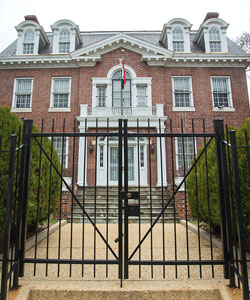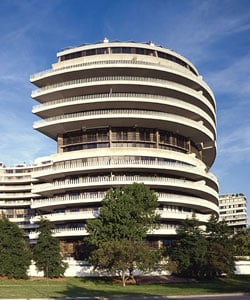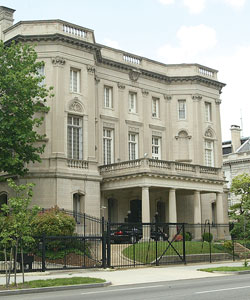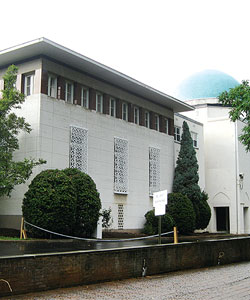After years of condemning the bloodbath in Syria, the State Department ordered President Bashar al-Assad’s government to close up shop in Washington. What happens to its embassy? When the US suspends an embassy’s operations under the protocols of the Vienna Convention on Diplomatic Relations, the objective is to render the property “frozen in time,” with the assumption it will reopen one day. “Sometimes,” says Cliff Seagroves, director of State’s office of diplomatic property, “they’re just frozen longer than anyone expects.” Here are a few rogue redoubts to consider.

Syria
2215 Wyoming Ave., NW
Our diplomatic ties with al-Assad’s government are still alive, if not well. But after the State Department sent home all high-level embassy personnel in March, this Colonial Revival building in the cloistered Sheridan-Kalorama historic district was shuttered, presumably until relations improve. The Syrians left behind a small contingent of administrative staff to tie up affairs and preserve archives, but following Libya’s precedent, the Syrians have appointed a private trustee to keep up the sprawling estate, including the portrait of President Taft that hangs there—he lived in the house while chief justice of the United States and died there in 1930.

Libya
2600 Virginia Ave., NW, Suite 300
A few days after clashes began between Muammar al-Qaddafi’s regime and protesters in early 2011, Ambassador Ali Aujali left the embassy in the Watergate to become the opposition National Transitional Council’s Washington representative. The law firm Patton Boggs, according to partner David Tafuri, provided the group with office space on M Street while it worked to unlock Qaddafi funds that were frozen by US sanctions. The Watergate office, which had been tended by a State Department-approved trustee, reopened in August 2011, after Secretary Hillary Clinton officially acknowledged the NTC as Libya’s rightful government—with Aujali as ambassador. Before settling back in, he reportedly deep-sixed thousands of Qaddafi’s “green book” manifestos that had been collecting dust.

Cuba
2630 16th St., NW
The Louis XV-style villa on Meridian Hill—built as the Cuban legation during World War I and soon upgraded to embassy status—was vacated after the US cut ties with Fidel Castro’s revolutionary government in 1961. But a year later, a photo appeared in the Washington Post showing evidence that the property’s Czech caretakers had taken up residence: laundry flapping from the naked flagpole on the roof. Cuban representatives were invited to return in 1977 when the building reopened as an interests section, without ambassadors but providing limited consular services. Today Cubans run it—as the US does its interests section overlooking Havana Bay. Officially, Switzerland is the building’s custodian.

Iran
3005 Massachusetts Ave., NW
We hold the keys to Iran’s embassy in Woodley Park, just as the Iranian government controls our possessions in Tehran, an informal arrangement Seagroves calls “reciprocal insurance.” In the shah era, the embassy’s distinctive dome was a beacon for dignitaries and politicos, as the likes of Elizabeth Taylor, Andy Warhol, Henry Kissinger, and Spiro Agnew mingled at swank soirees thrown by Ambassador Ardeshir Zahedi, the shah’s erstwhile son-in-law. State’s Office of Foreign Missions worked out of the former Iranian chancery in the late 1980s, and Seagroves’s office makes sure the lawn is trimmed and fixes broken pipes. But the building—with its elaborate mosaics, including a dazzling, kaleidoscopic design of 116,000 tiny mirrors in the vaulted Persian Room—is a shell of what it was.
This article appears in the May 2014 issue of Washingtonian.
















